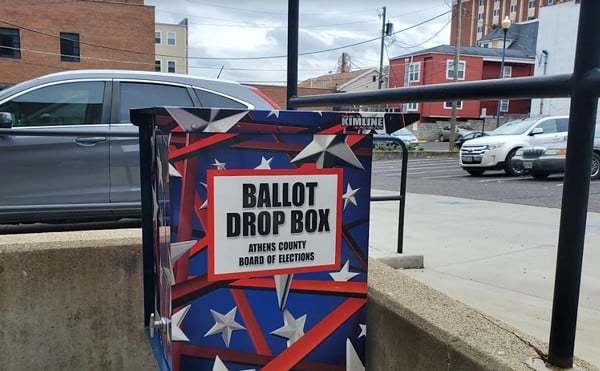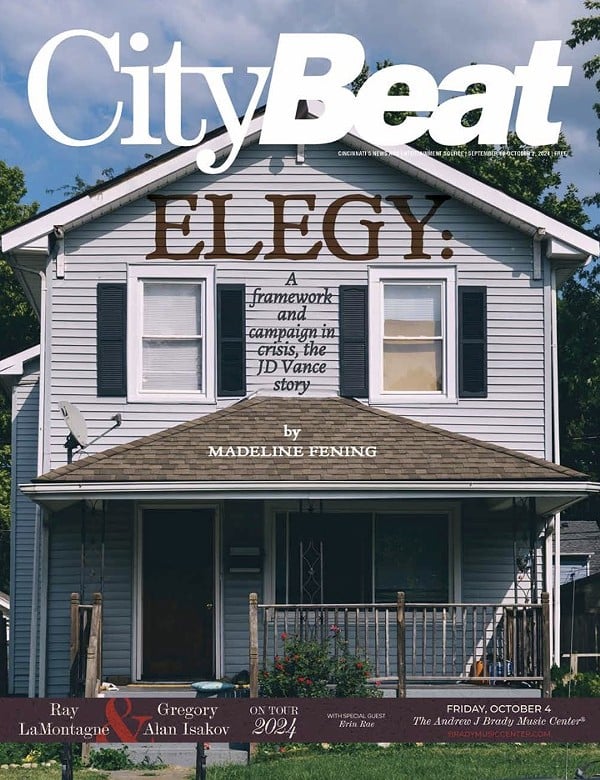JD Vance, the Ohio senator and Republican candidate for vice president, does not talk much about being white. Yet an analysis of public records indicates that more than $20 million has flowed to the self-styled "hillbilly" from policies and practices that fuel white advantage.
As I describe in my book, The White Bonus, combining social science and history with life story can offer a powerful — if rough — tally of the dollar value of white privilege for an individual American. A "white bonus" measures the cumulative financial and social benefits that white individuals often receive due to systemic racial advantages in American society. These advantages stem from easier access to resources like education, job opportunities, housing and capital. While not every white person experiences these benefits equally, the "white bonus" represents the aggregate effect of racial privilege that can accumulate over a lifetime and even across generations.
The tally for Sen. Vance’s “white bonus” comprises a modest family inheritance, high-paying jobs in Silicon Valley and political donations that Reckon has been able to tie directly to white advantage.
Neither the Trump campaign nor Vance’s Senate office responded to requests for comment by the time of publication.
These calculations are rough, but meaningful, said Darrick Hamilton, a leading economist who heads the Institute on Race, Power and Political Economy at The New School. They are also a bare minimum. "At the very least, it's presenting a baseline. If there's any risk [of inaccuracy], it's an underestimate," he said. "Absolutely underestimate."
Stability and a Modest Inheritance
As with many white folks, Vance's benefits start small. A few years after finishing high school, he received an inheritance that, adjusted for inflation, would have likely been around $27,000 — an amount that would put him in the roughly one-third of Americans who receive any inheritance at all.
In his memoir, Hillbilly Elegy, Vance credits his grandparents, Mamaw and Papaw, and their stability with giving him "a fair shot at the American Dream," as well as an inheritance that arrived just as he prepared to enter college. Yet his grandparents' jobs, income and home ownership all benefited from racial discrimination that favors whites and generates greater wealth as a result.
The history of the steel industry suggests that Papaw's job was safer and better paid because of discrimination that favored white workers and relegated Black workers to more dangerous, lower-paying jobs in the foundry.
Census records show that, by 1950, Papaw was apprenticing as a welder in Middletown, Ohio's Armco steel mill. Upward mobility in a plant through apprenticeship was overwhelmingly reserved for white workers until a 1974 federal consent decree against the United Steelworkers union and nine steel companies, including Armco. Favoritism towards white workers was so entrenched at Armco that the company issued $300,000 in settlement checks to Black workers in 1976 “in exchange for a release of claims of employment discrimination," according to a local news report. When Papaw retired in the '80s, wrote Vance, he had Armco stock and a "lucrative pension" — key supports that let his grandparents offer him the stability he credits with his ascent.
The Vance family's history of homeownership also depended on discrimination in favor of whites.
JD Vance’s great-grandparents bought the home on McKinley Street in January 1950. Census enumeration sheets show that every family in the surrounding census tract was white. Public deeds from physical archives at the Butler County Recorder’s Office also show that the developers of the home originally prohibited "undesirable people" from buying or renting it.
That phrase would have been aimed at Black residents, said Colin Gordon, a professor of history at the University of Iowa and author of “Patchwork Apartheid: Private Restriction, Racial Segregation, and Urban Inequality.” It was the middle of the first Great Migration, and even as Middletown’s overall population more than doubled from 1910 to 1940, its Black population increased nearly eightfold. Banning Black residents from specific homes in white neighborhoods was commonplace, Gordon said. "Almost anyone platting and building new houses outside of [a] major Midwestern city is doing this," he said. "In Ohio, it would be, by and large, aimed at African Americans."
Vance’s great-grandparents transferred the property to Papaw and Mamaw in 1978, and Papaw sold it to Mamaw for $1 in 1981, the same year, they separated. She owned it until her passing in 2005, the year Vance turned 21. Mamaw left her estate to two of her three children, splitting the share for her third — Vance's mom, who battled drug addiction — between Vance and his sister. The family sold the house in 2006 for $107,650 — $167,347 in 2024 dollars.
There’s no way to know how much Mamaw’s debts cut into the estate she left behind, but one-sixth of her home’s price would have been $17,942 in 2006 ($27,891 today). That is close to the $20,000 of expenses that Vance has said his G.I. Bill did not cover at Ohio State University, where he began classes in 2007.
Catapulting Into the Elite
Vance's slim early advantages eased his path to college and later to Yale Law School. There, doors opened to the worlds of elite publishing and high-paid work in Silicon Valley, which led to political office. At each step, public records along with history and social science suggest that being white was a necessary and significant condition for Vance's growing wealth.
At Yale, Vance's professor Amy Chua introduced him to her prominent book agent, Tina Bennett, who took on Vance. Bennett sold the proposal that became “Hillbilly Elegy” at auction in 2013 as an explanation of “why hill people aren’t doing so well.” The sale relied heavily on Vance's white identity and reflected the publishing industry's longstanding preference for white authors. Data from BookScan, an industry service tracking book sales, show that the book sold 1.5 million copies from 2016 until the week of this year's Republican National Convention. While there are no comprehensive public figures on royalty payments to Vance, he has reported just shy of $1 million in royalties from 2021 through 2023 on financial disclosure forms.
Vance also connected at Yale with the billionaire venture capitalist Peter Thiel, who launched Vance's venture capital career and underwrote his political ascent. Thiel persuaded friends to hire Vance in Silicon Valley. In Vance’s early years there, 78% of the venture capital workforce was white, compared to just 35% of Silicon Valley. Vance continued working in venture capital until he ran for Senate in 2022. That year, he reported having between $4.3 and $10.5 million in personal wealth and assets. The low end gives him a wealth 17 times that of the median white family — and 159 times that of the median Black family. Vance used that wealth to launch his political career, donating $1.4 million to his own 2022 Senate campaign. Peter Thiel joined him, donating $15.4 million to Vance and his PAC, Protect Ohio Values.
Thiel's history as both thinker and donor suggests that white candidates, including Vance, are far more likely to benefit from Thiel’s generosity than candidates of color — and to be given more money when they do.
Thiel co-authored the controversial book, “The Diversity Myth,” in which he compares a racially diverse campus to "the bar scene from Star Wars" — an icon of '70s sci-fi that showcased a couple dozen species of aliens at a cantina. Two of Thiel's college classmates told his biographer Max Chafkin that Thiel had called South African apartheid a sound economic system, a claim Thiel denies. Whatever Thiel’s beliefs, his political donations overwhelmingly support white, conservative candidates. Federal elections data show that in the last decade, Thiel and Per Aspera Policy, a dark money group to which he has been linked, have supported 533 candidates either directly or through political action committees. Of those, only 16 recipients have been Black and another 38 were other people of color. The remaining 479 — 90% — were white.
The racial divide is even starker in terms of dollar amounts. Since 2014, Thiel’s political donations have totaled $43.1 million. A Reckon analysis of federal election filings from 2014 to present day suggests that just 1% — $469,740 — has gone to Black candidates and another 4% — $1.6 million — to other candidates of color. That leaves 95% of Thiel’s donations going to whites, roughly 87 times the amount spent on Black candidates, with Thiel’s donations to Vance accounting for more than one-third of his political spending. At the candidate level, Thiel’s average support per white candidate, either directly or through PACs, was two to three times the average donation that reached candidates of color.
In something of a snowball effect, that white largesse has flowed, in part, back to Vance thanks to federal campaign contribution law. Since 2022, Vance has used campaign funds to repay the $1.4 million he loaned his campaign. His stint in the Senate led to his vice-presidential nomination — since which he has sold 613,528 more books.
"It's somewhat ironic," said The New School's Hamilton. "A man who presents themselves as rags to riches got to where they are because of a white bonus."
Tracie McMillan is the author of “The White Bonus: Five Families and the Cash Value of Racism in America.” She edits coverage of worker organizing for Capital & Main.
This story was originally published by Reckon and republished here with permission.







